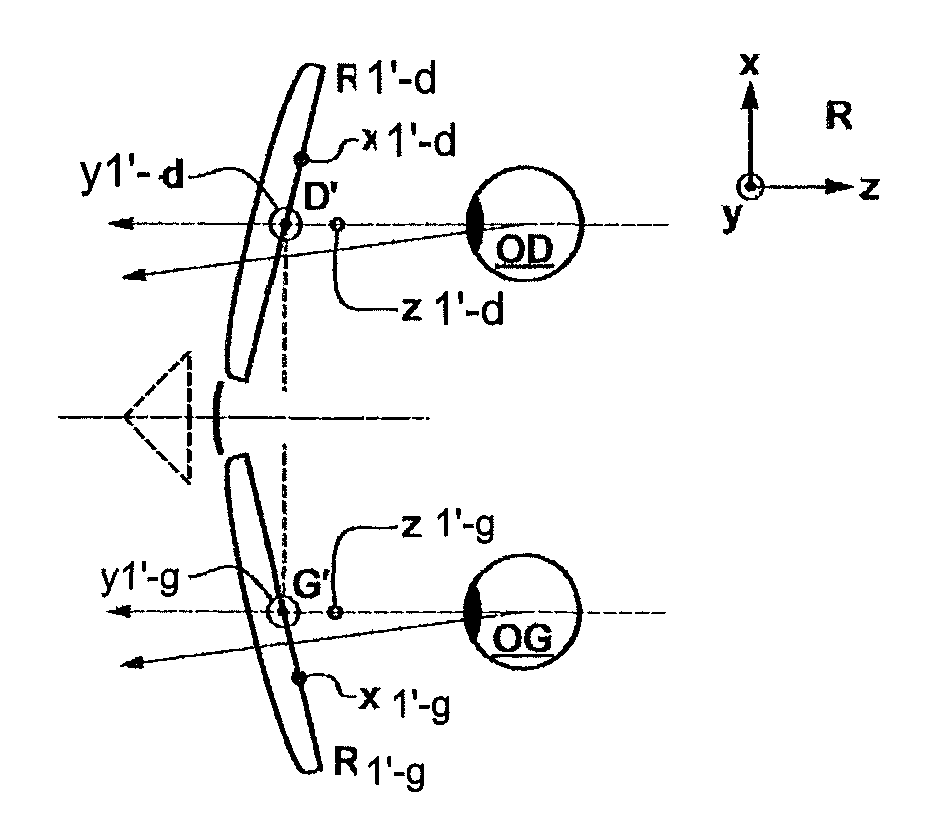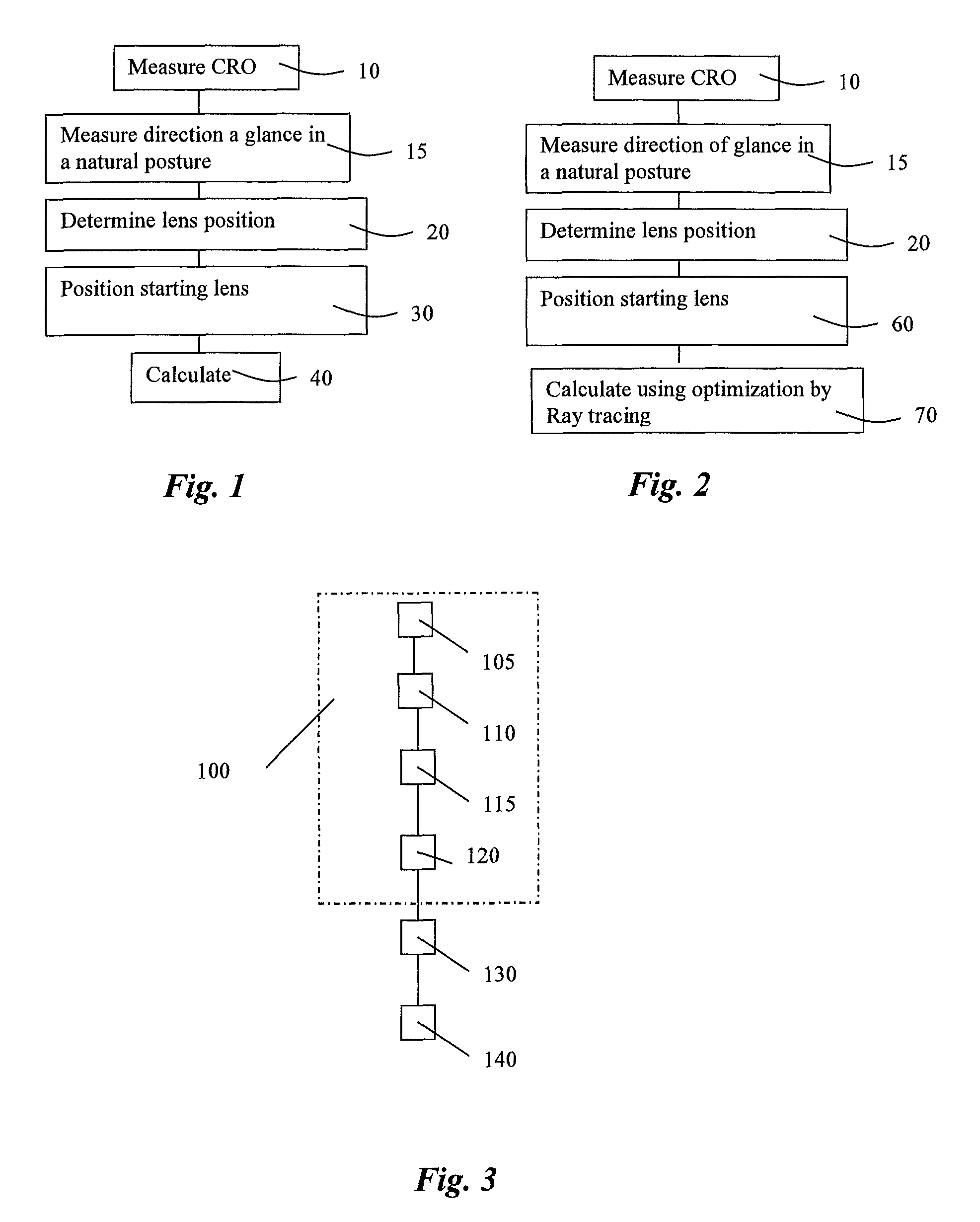Method of determining an ophthalmic lens
a technology of ophthalmology and lens, applied in the field of determining the ophthalmology lens, can solve the problems of different power correction values and lens obtained by optimisation not perfectly satisfying the wearer, and achieve the effect of better satisfaction for wearers
- Summary
- Abstract
- Description
- Claims
- Application Information
AI Technical Summary
Problems solved by technology
Method used
Image
Examples
Embodiment Construction
[0072]FIGS. 22-24 are diagrams of eye and lens optical systems, to illustrate the definitions used in the description. More specifically, FIG. 22 is a diagram showing a perspective view of a system illustrating the parameters α and β used to define a direction of gaze. FIG. 23 is a view in a vertical plane parallel to a front-back axis of the wearer's head and passing through the center of rotation of the eye in a case where the parameter β is 0.
[0073]We call Q′ the center of rotation of the eye; axis Q′F′, shown in FIG. 23 in phantom, is the horizontal axis through the center of rotation of the eye and extending ahead of the wearer—in other words the axis Q′F′ is the primary direction of gaze. This axis intersects the complex surface of the lens at a point called the fitting cross, which is marked on the lens to allow positioning of the lens by an optician. We define the point O, the intersection of the rear surface of the lens and the axis Q′F′. We define a sphere of the vertices,...
PUM
 Login to View More
Login to View More Abstract
Description
Claims
Application Information
 Login to View More
Login to View More - R&D
- Intellectual Property
- Life Sciences
- Materials
- Tech Scout
- Unparalleled Data Quality
- Higher Quality Content
- 60% Fewer Hallucinations
Browse by: Latest US Patents, China's latest patents, Technical Efficacy Thesaurus, Application Domain, Technology Topic, Popular Technical Reports.
© 2025 PatSnap. All rights reserved.Legal|Privacy policy|Modern Slavery Act Transparency Statement|Sitemap|About US| Contact US: help@patsnap.com



